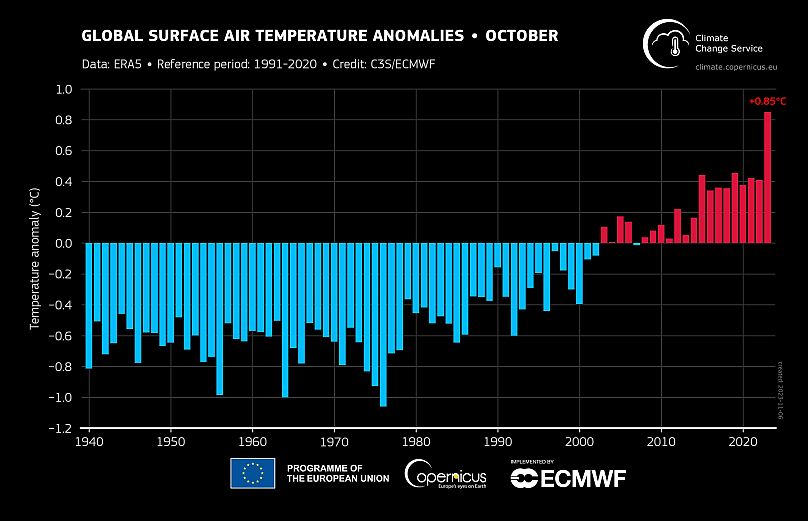After four months of global records being "obliterated", temperatures in October have left climate scientists nearly certain that 2023 will be the hottest on record.
Scientists now say that 2023 is “virtually certain” to be the warmest year on record.
Data from the Copernicus Climate Change Service (C3S) reveals that this October was the warmest on record globally. As a whole, it was 1.7ºC above pre-industrial averages after four consecutive months of temperature records being broken.
In Europe, it was the fourth warmest October on record with temperatures 1.3ºC higher than the 1991 to 2020 average.
"October 2023 has seen exceptional temperature anomalies, following on from four months of global temperature records being obliterated,” says Samantha Burgess, deputy director of C3S, the European Union’s climate change agency.
Last month also brought above-average precipitation in Europe, according to C3S. Storm Babet hit the north and west while Storm Aline brought heavy rain and flooding to Portugal and Spain.
Is El Niño contributing to record temperatures?
Though El Niño is likely to have a warming impact on the world, C3S says sea surface temperature anomalies remain lower than those seen at this time of year during the development of previously strong events in 1997 and 2015.
These anomalies help scientists track how El Niño will evolve compared to previous events and predict when it could peak.
During this weather phenomenon, warm waters surface across the Pacific Ocean, increasing sea surface temperatures. As the water is exposed to the atmosphere above, the air also warms impacting weather around the world.
The climate event supercharges extreme weather bringing increased rainfall and stronger storms.
Sea surface temperatures were already high before El Niño started to intensify earlier this year, however.
The hottest year on record
This month's unusually high temperatures leave 2023 well on track to overtake 2016 as the hottest year on record - and one that has been peppered with deadly extreme weather events.
“We can say with near certainty that 2023 will be the warmest year on record, and is currently 1.43ºC above the pre-industrial average,” Burgess adds.
Though the Paris Agreement calls for limiting warming to 1.5°C above pre-industrial averages, this refers to long-term temperatures over decades. Breaching this threshold for one or two of the next few years does not mean that this limit has been broken.
But, the more often the limit is breached, the closer the world gets to missing the Paris Agreement target. A recent UN report warned the window to avoid 1.5°C of global warming will close before 2030 if emissions aren't reduced.
“The sense of urgency for ambitious climate action going into COP28 has never been higher," says Burgess.













